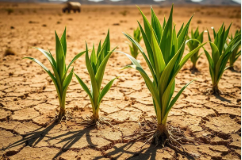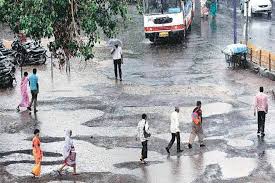
In India’s agricultural landscape, few commodities hold as much importance — and political weight — as onions, potatoes, and tomatoes. These three staples are so deeply embedded in Indian kitchens that they are part of everyday meals in almost every household. However, while these vegetables are a lifeline for millions of farmers, the drastic collapse in their prices has turned a blessing into a curse for those who grow them.
Recently released figures by India’s Ministry of Agriculture paint a worrying picture: the prices of potatoes, onions, and tomatoes have seen a free fall compared to the same period last year. For the average consumer, falling prices may look like relief from food inflation, but for farmers, they mean financial ruin.
How Bad Is the Price Fall?
The Ministry’s data for the last week of June 2025 reveals the true extent of the problem:
- Potato prices have plunged by 41.24% year-on-year.
- Onion prices have dropped by a staggering 52.06%.
- Tomato prices are down by 41.61%.
To put this into perspective, last June, farmers were getting ₹2,036 per quintal for potatoes. This year, the price is down to just ₹1,196 per quintal. For onions, the drop is even steeper — from ₹2,510 per quintal last year to just ₹1,203 now. Tomatoes, which fetched farmers ₹3,027 per quintal last year, are now at ₹1,767 per quintal.
This means a farmer who harvested the same produce this year is earning barely half of what they did a year ago — or even less, once you factor in rising input costs like seeds, fertilizers, labor, and transportation.
Why the Collapse?
Several factors have contributed to this grim scenario. A major reason for onion’s drastic price drop is the bumper harvest during the rabi season. While a good harvest should be a cause for celebration, in India’s flawed supply chain, it often turns into a curse. When the supply suddenly shoots up, prices plummet because there isn’t enough storage or processing capacity to handle the surplus.
The same story is true for potatoes and tomatoes. High production is not automatically good news when the supply chain is riddled with inefficiencies, wastage, and limited cold storage facilities.
A Double-Edged Sword: Relief for Consumers, Crisis for Farmers
The irony here is striking. When prices of onions, potatoes, or tomatoes spike, it triggers public anger and political uproar. Opposition parties hit the streets, ruling governments rush to control prices by banning exports, importing stocks, or deploying mobile vans for cheaper sales.
But when prices crash, there is no equally urgent action for farmers. There are few meaningful safeguards to ensure they at least get their basic production cost back. As a result, farmers who toil for months find themselves selling their produce at rates that don’t even cover their expenses.
Why These Vegetables Matter
Onions, potatoes, and tomatoes are known as ‘TOP crops’ — so crucial that they form the backbone of everyday cooking in Indian households. A spike in their prices can become a national headline. Yet, a price crash rarely makes it beyond local news — even though its consequences are just as severe.
- Potatoes: Uttar Pradesh is India’s largest producer. Small farmers here depend on potato cultivation for much of their annual income.
- Onions: Maharashtra leads onion production. Regions like Nashik are famous for supplying onions across the country.
- Tomatoes: Andhra Pradesh tops the chart for tomatoes, with thousands of small and marginal farmers relying on this cash crop.
When prices collapse, it is these small farmers who are hit the hardest. They have limited bargaining power and very little capacity to store or process unsold stock. If a harvest does not earn enough, it directly adds to rural debt.
The Missing Link: Storage and Processing
One of the key reasons for this cycle of boom and bust is India’s inadequate post-harvest infrastructure. Cold storage facilities are either lacking or too expensive for small farmers. As a result, perishable crops like onions, tomatoes, and potatoes must be sold off quickly — no matter what the market price is.
In the absence of efficient food processing units, surplus produce often rots before it can reach urban markets. While the government talks about doubling farmers’ income, the ground reality remains stuck in the same cycle of overproduction and underpricing.
MSP: Not for Vegetables
The Minimum Support Price (MSP) system, which guarantees a fixed price for crops like wheat and rice, does not extend to perishable vegetables. For onions, potatoes, or tomatoes, farmers are at the mercy of market fluctuations.
When prices soar, middlemen, traders, and sometimes big wholesalers pocket the profits. When prices collapse, the entire burden falls on farmers.
Farmers’ Plight: An Ongoing Story
Farmers from UP, Maharashtra, and Andhra Pradesh have repeatedly raised this issue, demanding that the government implement mechanisms like price support, storage incentives, or processing facilities.
Yet year after year, the situation repeats itself: farmers overproduce because that’s what they know, and then the oversupply floods the market, sending prices crashing. For onion farmers in Nashik, potato growers in Agra, or tomato cultivators in Chittoor — the story has been the same for decades.
What Do Farmers Want?
At the grassroots level, farmers are clear about what they need:
- Assured Price Support: A system to guarantee a minimum price for vegetables, just like MSP for grains.
- Better Storage: Cold chains and warehouses so they can hold their produce when market rates crash.
- Processing Units: Facilities to convert surplus into processed foods — dried onions, tomato paste, frozen fries — adding value and shelf life.
- Market Access: Direct linkages to retailers, urban cooperatives, and e-commerce players to bypass middlemen.
What Has the Government Done So Far?
The government has tried interventions like buffer stocks for onions, where it buys onions in bulk to stabilize prices. But the scale is too small to cover the massive production volumes of these vegetables.
Schemes like Operation Green were announced to stabilize prices of ‘TOP crops’ — Tomato, Onion, Potato. The idea was to provide subsidies for cold storage and transport, but implementation has been patchy at best.
Subsidies for setting up small food processing units exist on paper but have yet to become a practical reality for most small farmers.
Consumer vs Farmer: A Policy Dilemma
Governments walk a tightrope when it comes to essential vegetables. On one hand, they must protect consumers from sudden spikes in prices. On the other, they must ensure farmers get fair returns.
But this balancing act often tilts heavily in favor of urban consumers. When onion prices cross ₹80 per kilo, it becomes a national crisis. But when prices collapse to ₹5 a kilo at the farm gate, it barely makes headlines.
This is where India’s agricultural policy struggles — protecting both ends of the supply chain remains an unsolved puzzle.
The Human Cost
Beyond the numbers lies a more painful reality. For marginal farmers, a poor selling season means debt. It means borrowing money from local moneylenders at high interest to buy seeds for the next crop. It means cutting back on household expenses, pulling children out of school, or delaying medical treatments.
Each price crash deepens rural distress. It pushes thousands of small growers closer to the poverty line, undoing years of hard work.
The Way Forward
Experts and farmer leaders agree on some urgent steps:
✅ Expand the scope of Operation Green to actually cover storage and transport for all major vegetable-growing regions.
✅ Build more modern cold storage and warehousing near farms, so farmers don’t have to rush to sell at throwaway prices.
✅ Develop farmer producer organizations (FPOs) with direct links to retail giants, processors, and exporters.
✅ Train farmers to diversify — for instance, by growing value-added crops alongside onions, potatoes, or tomatoes.
✅ Enforce strict regulation of middlemen and commission agents, ensuring transparency in mandis.
A Wake-Up Call
This year’s crash in onion, potato, and tomato prices must be a wake-up call for India’s policymakers. Farmers cannot keep bearing the brunt of every market fluctuation while consumers enjoy temporary relief.
If India is serious about doubling farmer incomes, solving the price crash crisis must be a priority — not a seasonal issue that fades after headlines disappear.
For now, farmers across UP, Maharashtra, and Andhra Pradesh wait — with trucks full of onions, potatoes, and tomatoes — hoping the next price they get will cover at least their costs.














